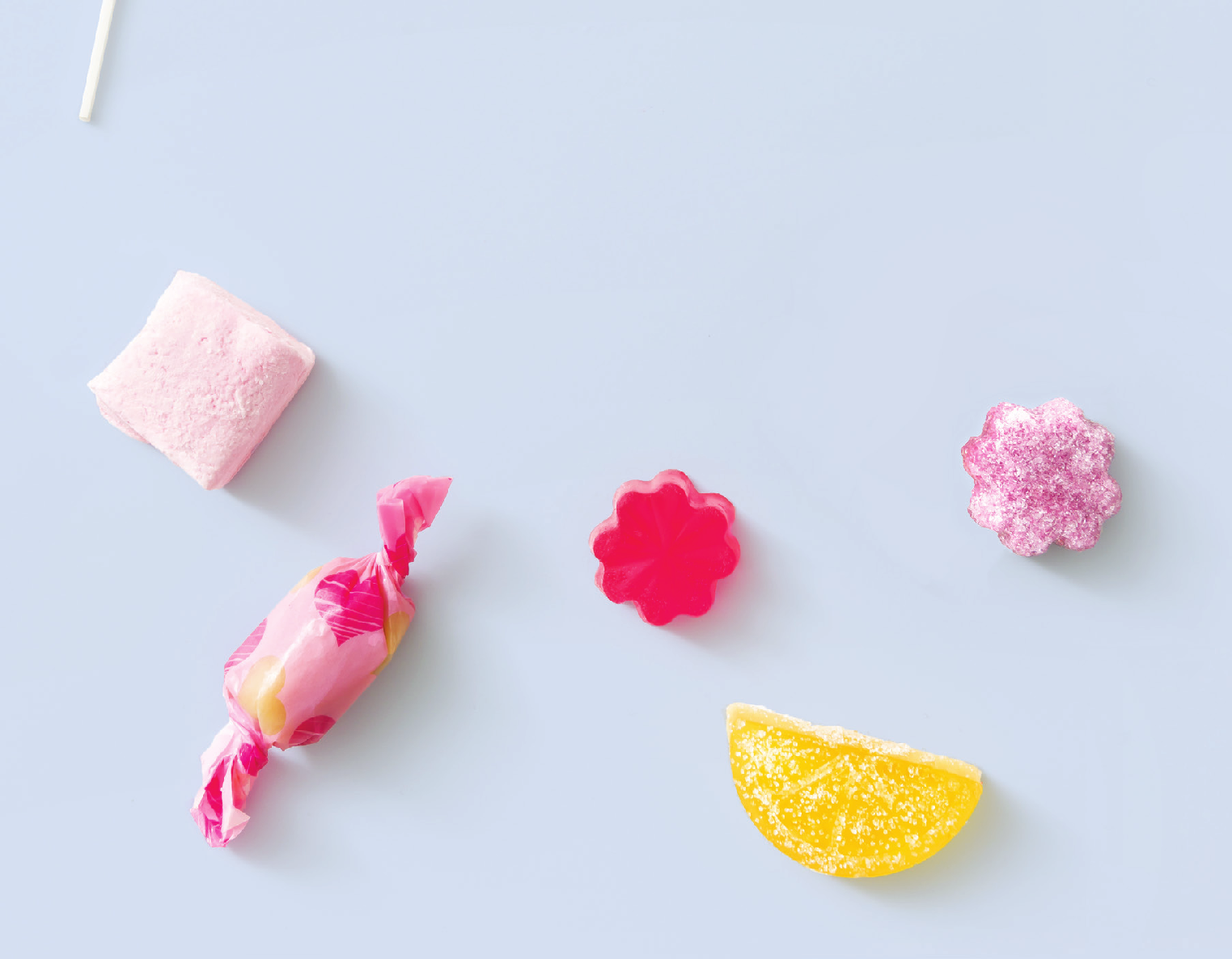
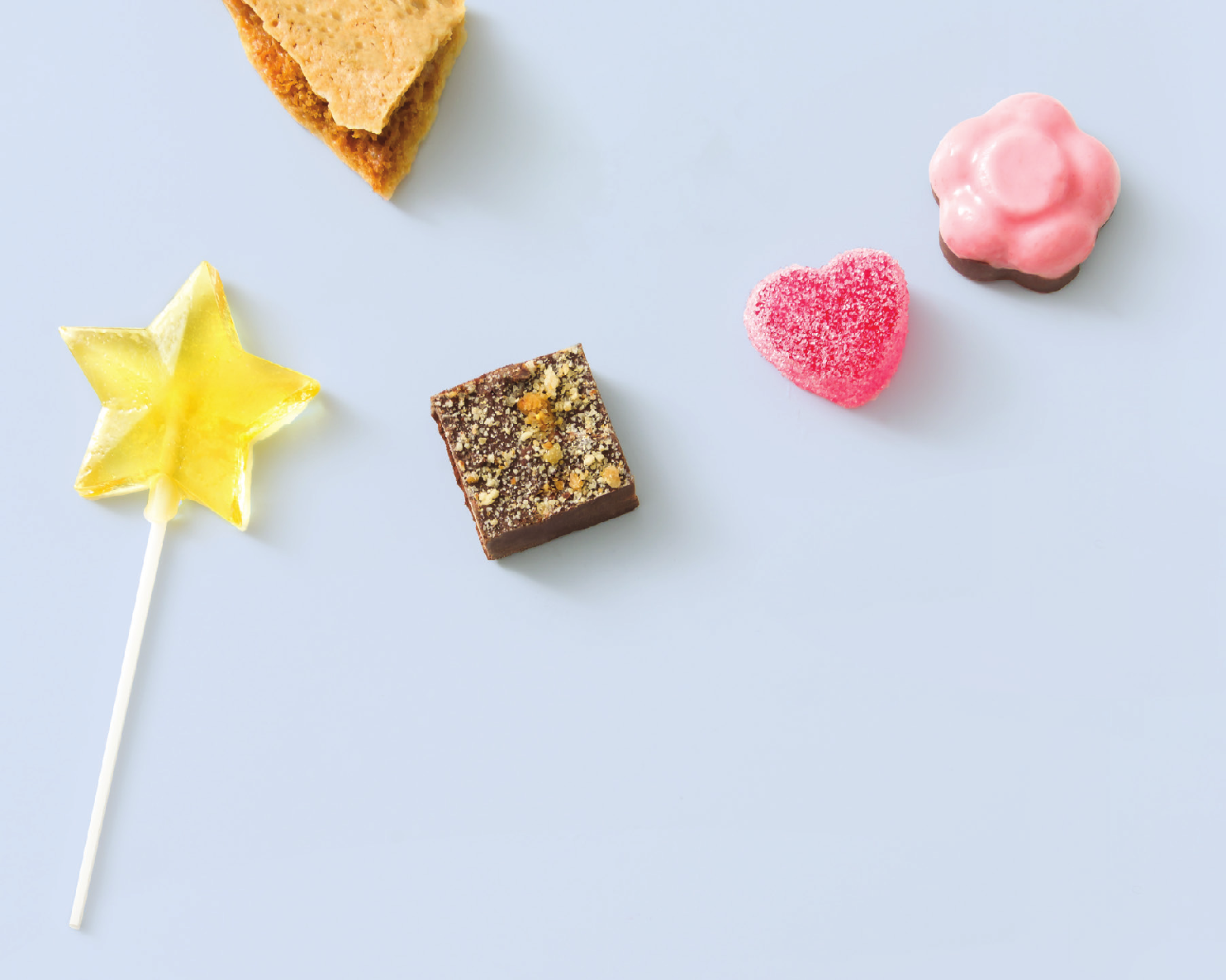 With longing to my beloved mother, Tema Blum HANDMADE CANDIES Adi Endevelt www.adi-candies.co.il Editing: Shlomit Perry | Word for Word Translated from Hebrew: Dana Smadja Photographs: Shai Afgin Book & Cover Design: Miri Nistor | Dodo Design Video Editing: Oren Ohaion Styling: Sarah Zeidman Produced in English: Notssa 2016, Hebrew edition 2017, English edition handmade.fudgecandy@gmail.com All rights of the book, its contents and photographs are reserved for Adi Endevelt. No copying, duplicating, photographing, translating, recording, presenting, storing in a database or distributing of this book or part of it is permitted in any way, whether electronically, optically, mechanically, or otherwise. Any commercial or non-commercial use of this book (or any part of it) requires a permit from the owner of the rights. Instructional videos of select recipes may also be found on the YouTube channel Adi Endevelt. CONTENTS How it all Began 5 About the Book 6 Getting to work 7 Equipment 7 Baking Pans Types and Sizes 8 Key Measurement Conversions 8 Key Ingredients 9 Rules for Preparing Sugar Candies 10 HARD CANDY Lollipops 12 Bubble Candies 14 Hard Candy in Bulk 16 Honey Candy 18 Butterscotch Candy 20 Pulled Candies 22 Opaque Candies 24 SOFT CANDIES & TAFFY Milk Taffy 27 Chocolate Taffy 29 Peanut Taffy 31 Fruit Milk Taffy 33 Hazelnut Milk Taffy 35 Nostalgic Candy 37 MARSHMALLOWS Marshmallow - Basic Recipe 40 Chocolate Flavored Marshmallow 42 Coffee Marshmallow 44 Marshmallow based on Fruit Nectar 46 Marshmallow clouds 48 CARAMEL CANDIES Salted Caramel Lollipops 51 English Toffee 53 Crunchy Peanut Candy 55 Sesame Candy 57 Seed Candy 59 Sweet Popcorn 61 FUDGE Fudge - Introduction 64 Basic Fudge 66 Cacao Fudge 68 FRUIT & JELLY CANDIES Jelly Candies 71 Jelly Blocks in Layers 73 Marmalade 75 Natural Fruit Puree 77 Champagne and Cherry Marmalade 79 Hard Candies from Citrus Peels 81 Candied Apple 83 Caramelized Pears 85 COCONUT CANDIES Vintage Coconut Candies 88 Coconut, Simply Coconut 90 coconut chocolate squares 92 Coconur chocolate with liquear 94 Fruit Coconut 96 MARZIPAN & NOUGAT CANDIES Marzipan Introduction 99 Traditional Marzipan 101 Calisson 103 Pistachio and Almonds Marzipan 105 Nougat Basic Recipe 107 Ground Almond Nougat 109 HOW IT ALL BEGAN During a family trip to Northern England in 2000, we came across a small boutique candy factory in one of the villages and we were watching the preparation of lemon-flavored candies. The sweet aroma of sugar syrup, cooked in a large copper pot, tempted me to stay there drawn to a caramel flavored candy bar, which had a mixture of airy and crunchy textures.
With longing to my beloved mother, Tema Blum HANDMADE CANDIES Adi Endevelt www.adi-candies.co.il Editing: Shlomit Perry | Word for Word Translated from Hebrew: Dana Smadja Photographs: Shai Afgin Book & Cover Design: Miri Nistor | Dodo Design Video Editing: Oren Ohaion Styling: Sarah Zeidman Produced in English: Notssa 2016, Hebrew edition 2017, English edition handmade.fudgecandy@gmail.com All rights of the book, its contents and photographs are reserved for Adi Endevelt. No copying, duplicating, photographing, translating, recording, presenting, storing in a database or distributing of this book or part of it is permitted in any way, whether electronically, optically, mechanically, or otherwise. Any commercial or non-commercial use of this book (or any part of it) requires a permit from the owner of the rights. Instructional videos of select recipes may also be found on the YouTube channel Adi Endevelt. CONTENTS How it all Began 5 About the Book 6 Getting to work 7 Equipment 7 Baking Pans Types and Sizes 8 Key Measurement Conversions 8 Key Ingredients 9 Rules for Preparing Sugar Candies 10 HARD CANDY Lollipops 12 Bubble Candies 14 Hard Candy in Bulk 16 Honey Candy 18 Butterscotch Candy 20 Pulled Candies 22 Opaque Candies 24 SOFT CANDIES & TAFFY Milk Taffy 27 Chocolate Taffy 29 Peanut Taffy 31 Fruit Milk Taffy 33 Hazelnut Milk Taffy 35 Nostalgic Candy 37 MARSHMALLOWS Marshmallow - Basic Recipe 40 Chocolate Flavored Marshmallow 42 Coffee Marshmallow 44 Marshmallow based on Fruit Nectar 46 Marshmallow clouds 48 CARAMEL CANDIES Salted Caramel Lollipops 51 English Toffee 53 Crunchy Peanut Candy 55 Sesame Candy 57 Seed Candy 59 Sweet Popcorn 61 FUDGE Fudge - Introduction 64 Basic Fudge 66 Cacao Fudge 68 FRUIT & JELLY CANDIES Jelly Candies 71 Jelly Blocks in Layers 73 Marmalade 75 Natural Fruit Puree 77 Champagne and Cherry Marmalade 79 Hard Candies from Citrus Peels 81 Candied Apple 83 Caramelized Pears 85 COCONUT CANDIES Vintage Coconut Candies 88 Coconut, Simply Coconut 90 coconut chocolate squares 92 Coconur chocolate with liquear 94 Fruit Coconut 96 MARZIPAN & NOUGAT CANDIES Marzipan Introduction 99 Traditional Marzipan 101 Calisson 103 Pistachio and Almonds Marzipan 105 Nougat Basic Recipe 107 Ground Almond Nougat 109 HOW IT ALL BEGAN During a family trip to Northern England in 2000, we came across a small boutique candy factory in one of the villages and we were watching the preparation of lemon-flavored candies. The sweet aroma of sugar syrup, cooked in a large copper pot, tempted me to stay there drawn to a caramel flavored candy bar, which had a mixture of airy and crunchy textures.
I asked the confectioner what this candy was made of, and he was only willing to tell me one word: sugar. My curiosity led me to search for recipes for candies in bookstores around England, but it turned out that the recipes were omitted from cookbooks during the first half of the 20th century since the candies became industrialized and therefore much cheaper and more available, and so there was no longer a reason to prepare them at home. The idea of candy making excited me, and so whenever I went abroad I was searching for recipes in old cookbooks at thrift stores and in libraries. Three years later, while I was browsing through a small booklet of recipes for candies, I found the recipe for that crunchy candy I tasted in England back then. With great enthusiasm I went to prepare it, but the result was not successful. So I threw it away and tried again and again untilI finally succeeded.
Soon thereafter, I began to attempt to prepare more candies. Very soon I realized that this process is actually an exact science and therefore I read professional articles about the chemistry of sugar in general, and about confectionery in particular. As soon as I was able to make a selection of candy with which I was satisfied, I knew that this is what I wanted to pursue from then on in a professional manner, at which point I established my own brand, "Handmade Candies". I traveled to England many times thereafter to be trained, observe and learn from confectioners of hand crafted candies, to acquire tips and sometimes even recipes. In addition to the making of candies and inventing new recipes, I researched the history of candy making, which I found very fascinating; information that I share in my own workshops. Each candy we prepare in the workshops has a special interesting story of its own.
For over a decade I have been creating recipes for candies, inventing new ones and changing existing ones. I prepare all of them using the traditional methods, as have been prepared in home kitchens 100 and more years ago. This way, the candies created have a special and high quality texture and a unique surprising taste. 5 | How it all Began ABOUT THE BOOK Ten years after I first watched the preparation of hand crafted candies, I already had my own collection. I decided to pass it on to anyone who wishes to prepare candies by himself. I wrote down the recipes, but they sat four more years in a drawer (more precisely on the computer)until I decided to publish them in a book.
In the meantime, I have added recipes, revised some which have already been written, and some have even disappeared as part of the wonders of technology so I had to try those recipes again (even though I am familiar with the components, I play around with other quantities of raw materials in order to produce the desired result). Throughout the years, it was my mother, Tema Blum, may she rest in peace, who believed in me, supported and encouraged me, and always longed to see the book unfold. To my great sorrow, she did not get to see it, but likely without her support and her faith, I would not have established "Handmade Candies" and this book would not have been published at all. When you browse through the pages of this book and you can see that using the same raw materials, one can make various candies, in my eyes, this is beautiful. What guided my writing was to simplify the recipes as much as possible and to use minimum amounts of raw materials. For any complicated recipes you may find a reference to a YouTube demonstration film.
I invite you to learn how to make candy on your own and turn it into a fun experience. When the sweet smell spreads around the house, it immediately creates a pleasant atmosphere and a warm feeling. Make sure to follow the exact instructions, be sure to be precise in your measurements and get ready to enjoy. GETTING TO WORK Candy preparation is an exact science you have to be strict with temperatures, correct amounts and the timing of mixing. You will also need to use certain materials and equipment which are not as frequently used in every kitchen. Equipment Pot To prevent the sugar from burning, the pot must have a thick bottom.
It is also desirable, but not necessary, that the pot will be shaped with rounded side panels. In the traditional candy industry it is common to use pots made of concave copper the copper is a good conductor for heat and the concave shape contributes to the even distribution of heat in the pot. At home you may use any double-bottomed pot. Measuring Cups and Spoons In the candy-making process, the ratios between the quantity of liquid, sugar and glucose is very important. In order to be precise, you need measuring cups and spoons which are marked with the per-unit volumes. Wooden Spoon In the process of candy preparation, you may reach very high temperatures .In order to prevent burns we use wooden spoons, since the wood does not conduct heat.
Next page

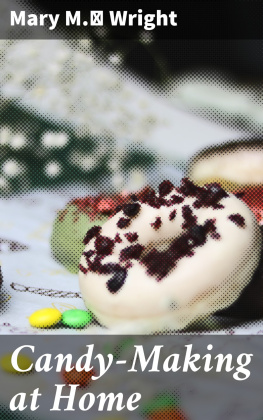
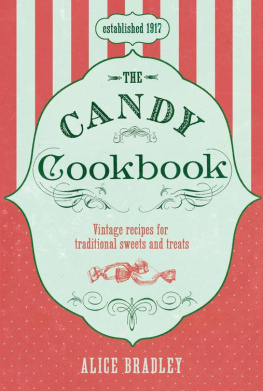
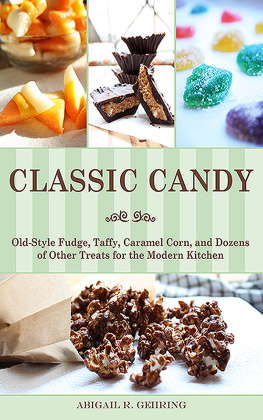

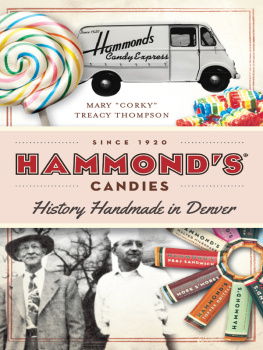
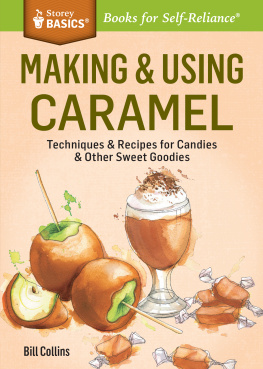
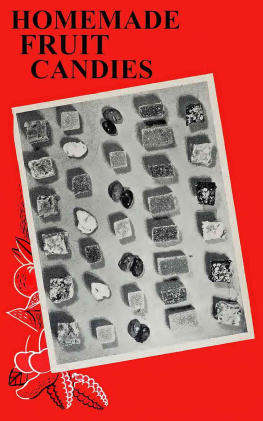
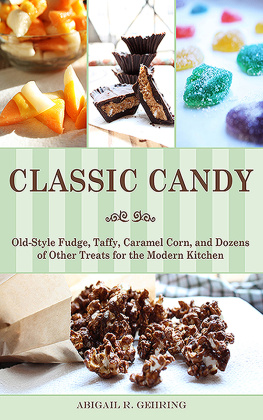

 With longing to my beloved mother, Tema Blum HANDMADE CANDIES Adi Endevelt www.adi-candies.co.il Editing: Shlomit Perry | Word for Word Translated from Hebrew: Dana Smadja Photographs: Shai Afgin Book & Cover Design: Miri Nistor | Dodo Design Video Editing: Oren Ohaion Styling: Sarah Zeidman Produced in English: Notssa 2016, Hebrew edition 2017, English edition handmade.fudgecandy@gmail.com All rights of the book, its contents and photographs are reserved for Adi Endevelt. No copying, duplicating, photographing, translating, recording, presenting, storing in a database or distributing of this book or part of it is permitted in any way, whether electronically, optically, mechanically, or otherwise. Any commercial or non-commercial use of this book (or any part of it) requires a permit from the owner of the rights. Instructional videos of select recipes may also be found on the YouTube channel Adi Endevelt. CONTENTS How it all Began 5 About the Book 6 Getting to work 7 Equipment 7 Baking Pans Types and Sizes 8 Key Measurement Conversions 8 Key Ingredients 9 Rules for Preparing Sugar Candies 10 HARD CANDY Lollipops 12 Bubble Candies 14 Hard Candy in Bulk 16 Honey Candy 18 Butterscotch Candy 20 Pulled Candies 22 Opaque Candies 24 SOFT CANDIES & TAFFY Milk Taffy 27 Chocolate Taffy 29 Peanut Taffy 31 Fruit Milk Taffy 33 Hazelnut Milk Taffy 35 Nostalgic Candy 37 MARSHMALLOWS Marshmallow - Basic Recipe 40 Chocolate Flavored Marshmallow 42 Coffee Marshmallow 44 Marshmallow based on Fruit Nectar 46 Marshmallow clouds 48 CARAMEL CANDIES Salted Caramel Lollipops 51 English Toffee 53 Crunchy Peanut Candy 55 Sesame Candy 57 Seed Candy 59 Sweet Popcorn 61 FUDGE Fudge - Introduction 64 Basic Fudge 66 Cacao Fudge 68 FRUIT & JELLY CANDIES Jelly Candies 71 Jelly Blocks in Layers 73 Marmalade 75 Natural Fruit Puree 77 Champagne and Cherry Marmalade 79 Hard Candies from Citrus Peels 81 Candied Apple 83 Caramelized Pears 85 COCONUT CANDIES Vintage Coconut Candies 88 Coconut, Simply Coconut 90 coconut chocolate squares 92 Coconur chocolate with liquear 94 Fruit Coconut 96 MARZIPAN & NOUGAT CANDIES Marzipan Introduction 99 Traditional Marzipan 101 Calisson 103 Pistachio and Almonds Marzipan 105 Nougat Basic Recipe 107 Ground Almond Nougat 109 HOW IT ALL BEGAN During a family trip to Northern England in 2000, we came across a small boutique candy factory in one of the villages and we were watching the preparation of lemon-flavored candies. The sweet aroma of sugar syrup, cooked in a large copper pot, tempted me to stay there drawn to a caramel flavored candy bar, which had a mixture of airy and crunchy textures.
With longing to my beloved mother, Tema Blum HANDMADE CANDIES Adi Endevelt www.adi-candies.co.il Editing: Shlomit Perry | Word for Word Translated from Hebrew: Dana Smadja Photographs: Shai Afgin Book & Cover Design: Miri Nistor | Dodo Design Video Editing: Oren Ohaion Styling: Sarah Zeidman Produced in English: Notssa 2016, Hebrew edition 2017, English edition handmade.fudgecandy@gmail.com All rights of the book, its contents and photographs are reserved for Adi Endevelt. No copying, duplicating, photographing, translating, recording, presenting, storing in a database or distributing of this book or part of it is permitted in any way, whether electronically, optically, mechanically, or otherwise. Any commercial or non-commercial use of this book (or any part of it) requires a permit from the owner of the rights. Instructional videos of select recipes may also be found on the YouTube channel Adi Endevelt. CONTENTS How it all Began 5 About the Book 6 Getting to work 7 Equipment 7 Baking Pans Types and Sizes 8 Key Measurement Conversions 8 Key Ingredients 9 Rules for Preparing Sugar Candies 10 HARD CANDY Lollipops 12 Bubble Candies 14 Hard Candy in Bulk 16 Honey Candy 18 Butterscotch Candy 20 Pulled Candies 22 Opaque Candies 24 SOFT CANDIES & TAFFY Milk Taffy 27 Chocolate Taffy 29 Peanut Taffy 31 Fruit Milk Taffy 33 Hazelnut Milk Taffy 35 Nostalgic Candy 37 MARSHMALLOWS Marshmallow - Basic Recipe 40 Chocolate Flavored Marshmallow 42 Coffee Marshmallow 44 Marshmallow based on Fruit Nectar 46 Marshmallow clouds 48 CARAMEL CANDIES Salted Caramel Lollipops 51 English Toffee 53 Crunchy Peanut Candy 55 Sesame Candy 57 Seed Candy 59 Sweet Popcorn 61 FUDGE Fudge - Introduction 64 Basic Fudge 66 Cacao Fudge 68 FRUIT & JELLY CANDIES Jelly Candies 71 Jelly Blocks in Layers 73 Marmalade 75 Natural Fruit Puree 77 Champagne and Cherry Marmalade 79 Hard Candies from Citrus Peels 81 Candied Apple 83 Caramelized Pears 85 COCONUT CANDIES Vintage Coconut Candies 88 Coconut, Simply Coconut 90 coconut chocolate squares 92 Coconur chocolate with liquear 94 Fruit Coconut 96 MARZIPAN & NOUGAT CANDIES Marzipan Introduction 99 Traditional Marzipan 101 Calisson 103 Pistachio and Almonds Marzipan 105 Nougat Basic Recipe 107 Ground Almond Nougat 109 HOW IT ALL BEGAN During a family trip to Northern England in 2000, we came across a small boutique candy factory in one of the villages and we were watching the preparation of lemon-flavored candies. The sweet aroma of sugar syrup, cooked in a large copper pot, tempted me to stay there drawn to a caramel flavored candy bar, which had a mixture of airy and crunchy textures.